#Southern Regional Council
Explore tagged Tumblr posts
Text
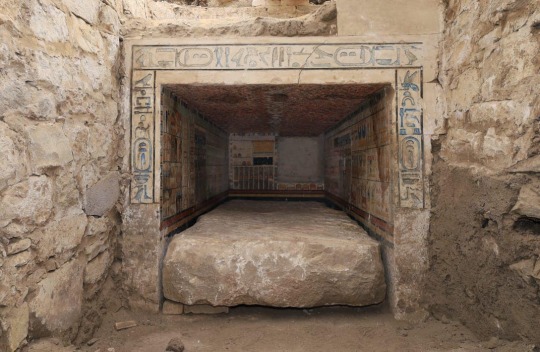
4,000-Year-Old Tomb of Egyptian Royal Physician Found in Saqqara
Teti Neb Fu, a high-ranking physician during Pharaoh Pepi II's reign, held titles like Chief Dentist, Priest of Serket, and Director of Medicinal Plants.
In the southern region of the Saqqara archaeological site, a joint French-Swiss archaeological team made an important discovery uncovering the mastaba tomb of the royal physician Teti Neb Fu from the Old Kingdom, according to a statement by the Egyptian Ministry of Tourism and Antiquities.
This tomb, unearthed in the southern region of the archaeological site of Saqqara, known to contain the tombs of high-ranking officials from the Egyptian Old Kingdom, shows that medicine and magic were once equally revered, and expertise in both earned a long-dead physician to the pharaohs a place of honor among the ancient world’s most esteemed.
Dating back over 4,000 years to the reign of King Pepi II, this important find features exquisite carvings and vibrant artwork, including a painted false door and elaborate scenes depicting funeral offerings.
The sarcophagus found inside the tomb was also inscribed with the name of its occupant and his titles, according to the post. Because of the burial location in Saqqara, researchers knew he was important, but Teti Neb Fu’s official titles named him as the chief palace physician.
Teti Neb Fu, who held prestigious titles such as Chief Palace Physician, Chief Dentist, and Director of Medicinal Plants, also had a unique role as a “Magician” of the Goddess Serket, specializing in the treatment of venomous bites.
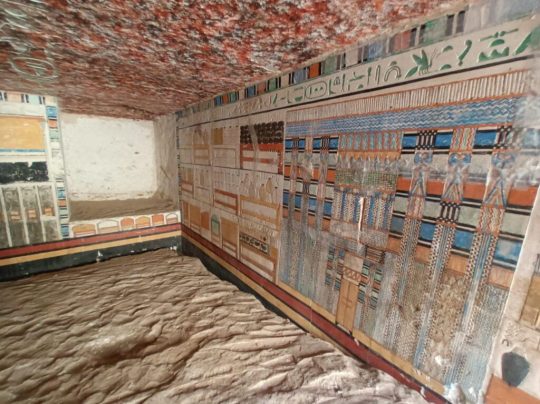
Additionally, he was known as the “Great Physician of Teeth” and “Director of Medicinal Plants”, suggesting that he led research and practical applications in the fields of dentistry and the use of therapeutic herbs.
Even though it had been looted in the past, the mastaba still has many of its ornamental features. The director of the archaeological mission, Dr. Philippe Collombert, said the walls are decorated with remarkable reliefs and inscriptions, including a complex frieze that displays the owner’s name and titles.
Among the most remarkable elements is the red-painted ceiling, which is intended to resemble granite blocks, a material commonly found in imposing buildings. The titles and name of the doctor are also written in the middle of the ceiling. An additional noteworthy discovery within the mastaba is a stone sarcophagus, which has hieroglyphic decorations inside that offer more information about Teti Neb Fu and his accomplishments.


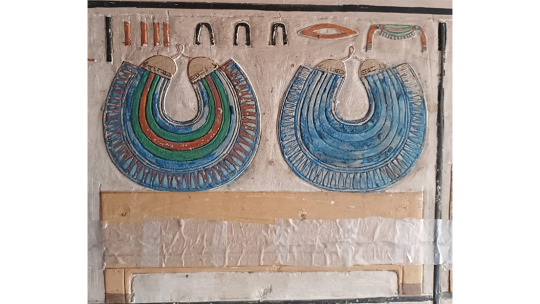
Mohamed Ismail Khaled, secretary-general of Egypt’s Supreme Council of Antiquities, emphasized the importance of this discovery, stating that the texts and drawings on the tomb’s walls unveil new insights into the daily life of the Old Kingdom.
This discovery strengthens Saqqara’s position as one of Egypt’s most important historical sites and contributes to its rich archaeological legacy.
Excavations in this area of Saqarra began in 2022, to unearth the graves of state employees for King Pepi who are buried near him and his wives, officials said.
By Oguz Buyukyildirim.
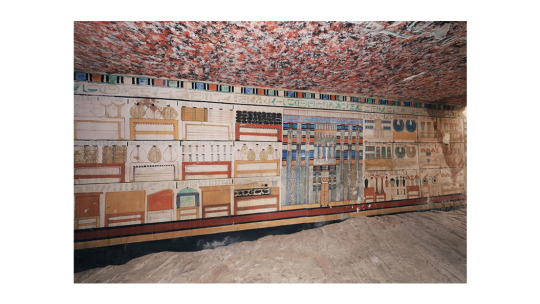
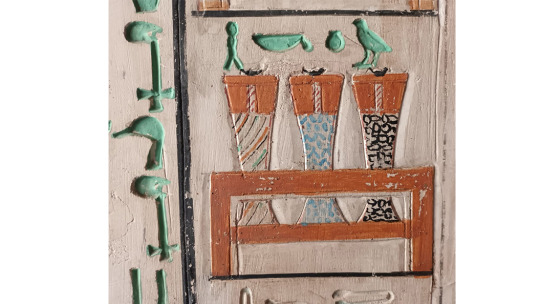
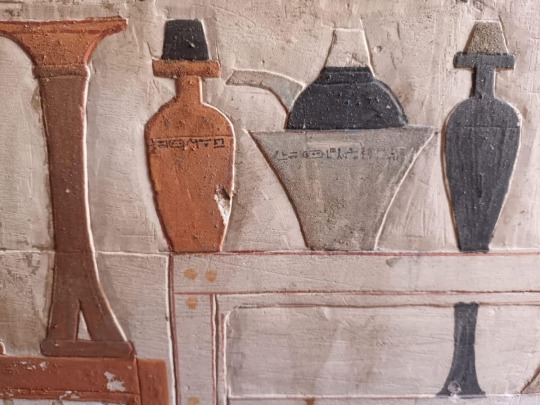
#4000-Year-Old Tomb of Egyptian Royal Physician Found in Saqqara#Saqqara#ancient tomb#ancient grave#ancient artifacts#archeology#archeolgst#history#history news#ancient history#ancient culture#ancient civilizations#ancient egypt#egyptian history#egyptian hieroglyphs#ancient art#Teti Neb Fu
299 notes
·
View notes
Photo
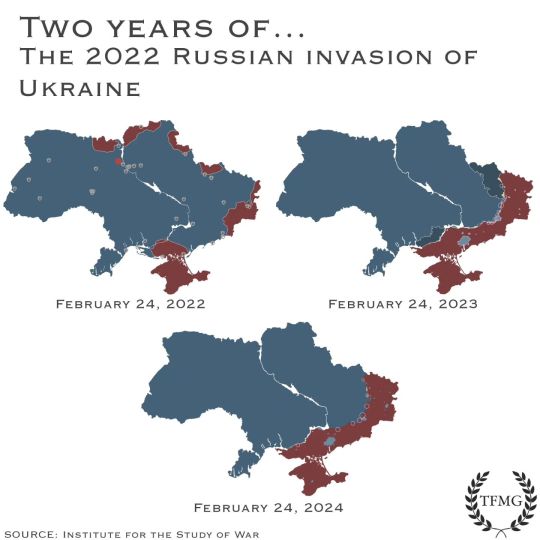
Two years of Russian invasion of Ukraine
by theflagmapguy_2.0
On 24 February 2022, Russia invaded Ukraine in a major escalation of the Russo-Ukrainian War, which began in 2014. The invasion has caused tens of thousands of deaths on both sides and instigated Europe's largest refugee crisis since World War II. About 8 million Ukrainians were displaced within their country by June, and more than 8 million fled the country by February 2023. After the Revolution of Dignity in 2014, Russia annexed Crimea and Russian-backed paramilitaries seized the Luhansk and Donetsk oblasts of Ukraine's Donbas region, sparking a regional war. In March 2021, Russia began a military build-up, amassing up to 190,000 soldiers at Ukraine's borders. Russian government officials denied plans to attack Ukraine until the day before the invasion. On 21 February 2022, Russia recognised the Donetsk People's Republic and the Luhansk People's Republic, two self-proclaimed breakaway quasi-states in the Donbas. The next day, the Federation Council of Russia authorised the use of military force and Russian soldiers entered both territories. The invasion began the morning of 24 February 2022 upon Russian president Vladimir Putin's announcement of a "special military operation" seeking the "demilitarisation" and "denazification" of Ukraine. In his address, Putin espoused irredentist views, challenged Ukraine's right to statehood, and falsely claimed that Ukraine was governed by neo-Nazis who persecuted the ethnic Russian minority. Minutes later, Russian air strikes and a ground invasion were launched along a northern front from Belarus towards Kyiv, a north-eastern front towards Kharkiv, a southern front from Crimea, and a south-eastern front from Donetsk and Luhansk. In response, Ukrainian president Volodymyr Zelenskyy enacted martial law and a general mobilisation.
213 notes
·
View notes
Text
The Settler Violence You Don’t Hear About
We all know about the Turkish occupation of Cyprus and the hundreds of thousands of Turkish settlers living there since the Turkish invasion and occupation of part of the island in 1974. Actually no, most people have never heard about the illegal Turkish settlement of Cyprus, but that’s a subject for a different story. I want to talk about a more recent Turkish illegal settlement, one that is both ongoing and far more severe.
In June 2024, while Turkey was frothing at the mouth about the treatment of Arabs in "Occupied Palestine" – that is, Israel – Syrian refugees, also Arabs, were being lynched in Turkey for allegedly harassing a Turkish child. This was nothing new. According to EuroMed Rights, this was "yet another example in a series of anti-refugee discontent and violence. Turkey has previously experienced waves of lynching and attacks against refugees in 2014, 2017, and 2019, alongside individual offences that often go unpunished due to a pervasive culture of impunity."
However, this time the Arabs didn’t take this lying down.
Syrian militias allied with Turkey launched several attacks against Turks in Turkish-occupied northern Syria, resulting in Turkish fatalities. This is where it gets interesting, so let’s talk about this occupation for a little bit.
The Turkish-occupied region of Syria is around one-third larger than the West Bank and is rife with human rights abuses that are simply ignored by the Western media. In fact, in 2021 the NYT was accused by Kurdish and international activists of whitewashing Turkey’s occupation…which I bet you didn’t hear about either.
In 2018, Turkey invaded the majority-Kurdish Afrin District of northwest Syria ostensibly to prevent Kurdish attacks against Turkey in what was ironically called “Operation Olive Branch.” To quote Turkish President Recep Tayyip Erdoğan, "What can that terror army target but Turkey? Our mission is to strangle it before it's even born." So, very proactive self-defense.

Kurdish refugees leaving Afrin in Northern Syria
As many as 510 civilians were killed in the operation. Other atrocities included the mutilation of a female corpse by Turkey's Syrian National Army proxies, indiscriminate bombardment of civilians by Turkish forces, and shooting of refugees fleeing into Turkey.
However, the worst was yet to come. After Turkish-led forces had captured the Afrin District in 2018, they engaged in a wide resettlement program that included moving Arab settlers from southern Syria into homes that belonged to the displaced Kurdish and Yazidi locals. The previous owners were then prevented from returning to Afrin to reclaim their stolen homes. This wasn’t a chaotic process but a conscious ethnic replacement by the Turkish government and its SNA proxies.

Al Amal 2, one of the Arab settlements build in Afrin.
Paragraph 47 of the report of the Independent International Commission of Inquiry on the Syrian Arab Republic submitted to the UN Human Rights Council noted that "multiple accounts indicate that the property of Kurdish owners was looted and appropriated by Syrian National Army members in a coordinated manner. For example, in September 2019, civilians in the Shaykh al-Hadid subdistrict (of the Afrin region) described how members of Division 14, Brigade 142 (the Suleiman Shah Brigade) of the Syrian National Army had gone from door to door instructing Kurdish families with fewer than three members to vacate their houses to accommodate individuals arriving from outside of Afrin." It was also reported by Al-Monitor and Arab News that Yazidi and Kurdish women and girls have been kidnapped by the SNA for ransom, rape, or forced marriage. It stands to reason this was also done to “encourage” Kurds to leave the region.
Following the Turkish invasion, as many as 200,000 indigenous Kurds and Yazidis fled from the Afrin District while an estimated 458,000 settlers moved into their homes. According to a GenocideWatch article from 2020, the size of the indigenous population of Kurds in the Afrin region dropped from 97 percent before the occupation to 34.8 percent.
This is an ongoing process. According to a report by the Hawar News Agency from 2024, “Within the aim of separating Afrin from Syria and annexing it, the Turkish occupation continues to commit crimes, intimidate the people, and trade in their property by Turkey's settlers and mercenaries. Local sources said that a settler from the southern Aleppo countryside sold a house belonging to the citizen Issam Hussein, a resident of the village of Andariyah, in the city of Janders to another settler for $1,500.”
But wait, this gets even crazier!
Many of these settlers are Palestinians.
That’s right. Even as you read these lines, illegal Palestinian settlers are moving from the West Bank into stolen Kurdish homes in an occupied region, displacing and replacing the indigenous population… and they’re proud of it!
According to a 2022 article from the Afrin Post, “the first part of a residential community constructed in Jindires district was opened, with direct funding from the residents of Al-Zaeem village in the occupied city of Jerusalem. The project plan consists of 75 housing units, each of which consists of 4 houses, to accommodate about 220 families. Today, 32 housing units (about 128 families) have been settled in, while work is underway and preparations are being completed to start the second part of the project.”

"Funded by Al Zaim donations, in Quds Town.”
According to exiled Kurdish politician Abdulrahman Apo, all the villages of Afrin have been “turned into settlements. In addition to Syrian Arabs, 10,000 Palestinians are stationed in Afrin.”
A spokesman for one of the Palestinian settlements said, "Today, we arrived from Palestine to the airport, and from there to northern Syria, to deliver the housing units… [We] know the meaning of occupation, displacement, asylum and home displacement."
He sure does! He’s actively engaged in it! He’s doing exactly what the Palestinians falsely accuse Israel of doing, only on steroids.
In just a few years, more than 100 settlements have been built by Turkey and funded by Gulf countries and Palestinian associations in areas under Turkey’s control. In fact, one of the settlements is even called “Palestine Ajnadine.”
What can I say? The man is a master of irony, almost as much as the genius who called the whole thing "Operation Olive Branch."
Western liberals make so much noise about Israel, they silence the screams and pleas of tens of millions of victims of severe and ongoing human right abuses all over the planet. This obsessive tunnel vision creates the ultimate smokescreen for a plethora of atrocities that dwarf anything Israel may be involved in. Be honest, I’m sure you’ve never heard about Palestinian settlements on Kurdish land before you read this article. Why would you? Western media never talks about it. Western intellectuals never talk about it. It seems no one cares about it except the Kurds themselves.
This obfuscation by fake moral outrage is a big reason for Turkey’s ostensible obsession with Gaza. It’s less their concern for the Palestinians or objection to settlements, and more their desire to distract from their own ongoing crimes. I’m sure the Kurds, as well as the Greeks, Cypriots, Syrians, and other nations colonized by Turkey, would appreciate it, if Western liberals could spare some of their moral outrage for the occupation and colonization of these nations.
URI KURLIANCHIK
DEC 3
39 notes
·
View notes
Photo

The Sixteenth-Century Massacre of the Waldensians of Mérindol
As the Reformation developed in France in the first half of the 16th century, there were several episodes of severe repression which preceded the Wars of Religion (1562-1598). These were times of great hardship and oppression against those who embraced Protestant teachings. One notable chapter of persecution took place in the Luberon region of France against the Waldensians (Vaudois), the spiritual descendants of Pierre Waldo, which led to the Mérindol massacre in 1545.
Early Persecution
Early in the 12th century, Pierre Waldo (l. 1140–1218) took a vow of poverty, confirmed by Pope Alexander III (served 1159–1181), and became the leader of a sect known as the Waldensians. Waldo was among the forerunners of the Reformation who sought to purify and reform the Catholic Church from within through a return to apostolic teaching. Initially, he did not seek separation from the Catholic Church or the establishment of a new sect. In time, partly due to their emphasis on preaching the gospel in the local language, Waldo and his followers were banned from preaching by Pope Lucius III (served 1181–1185). Waldo was excommunicated at the Council of Verona in 1184, and Waldensian teaching was condemned at the Fourth Lateran Council in 1215.
Exiled from their city of Lyon, the Waldensians spread to the valleys of Dauphiné and the Alps of Piedmont, to Languedoc, and to Spain. The Inquisition failed to stamp them out and many of the exiles settled in the Luberon region in southern France. The Waldensians sought to live in peace in the sheltered valleys of the Luberon where they drained the swamps and cultivated lands belonging to Italian lords. It is said that people inhabiting the plains feared the Waldensians who had a reputation as sorcerers. At that time, they had spiritual leaders called uncles (barbes) in their language who had authority over the people. The barbes were considered wise and venerable, and mysterious powers were attributed to them. Their brothers in Dauphiné had previously suffered persecution and many had fled to Luberon for safety.
The archbishop of Aix feared that this concentration of heretics might embrace the Reformation. Around 1530, the inquisitor Jean de Roma was sent to investigate the Waldensians where he committed atrocities and enriched himself at their expense. As a result of this initial violence, two Waldensians, Maurel and Masson, crossed the frontiers to Alsace and Switzerland to confer with Reformed leaders in Geneva. They were persuaded of the need to reform their beliefs, to definitively break with superstitious practices, and were sent back with letters for their brothers in Mérindol. Only Maurel arrived home safely; Masson was arrested and burned alive at Dijon. A decisive meeting took place in Piedmont in 1532 with Waldensian leadership from different regions. William Farel (l. 1489–1565), over six days, convinced them to preserve only two sacraments, baptism and the Eucharist, without the mystical sense given by the Catholic Church. Farel welcomed them to the Reformed faith with enthusiasm and called them “the elder sons of the Reformation.”
Continue reading...
54 notes
·
View notes
Text
The plans would see the construction of more than 1,700 new homes for Israeli settlers. There are already around 200,000 Israelis living in illegal settlements in Palestinian East Jerusalem, which Israel annexed in 1967.
"If it weren't for the war (on Gaza), there would be a lot of noise. It's a highly problematic project for the continuity of a Palestinian state between the southern West Bank and east Jerusalem," said Hagit Ofran from the Israeli NGO Peace Now.
The move was condemned by regional states, with Turkey saying that settlements damage efforts to achieve lasting peace in the region.
“It is completely unacceptable that Israel approved a plan to build approximately 1,800 settlements on 186 acres of land in East Jerusalem," Turkey’s foreign ministry said on Wednesday.
...
Egypt also slammed the move as a blatant violation of international law and UN Security Council resolutions, urging Israel to halt the construction of illegal settlements on occupied Palestinian land in a foreign ministry statement.
147 notes
·
View notes
Text
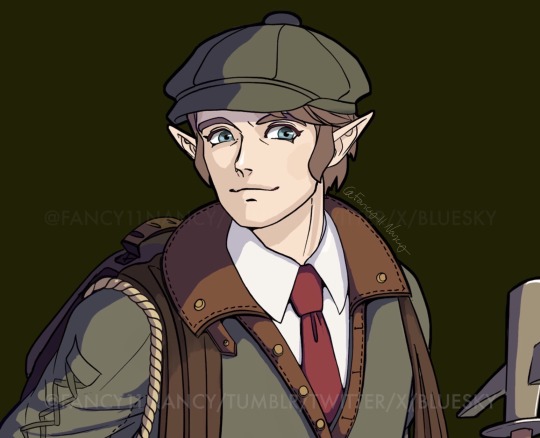
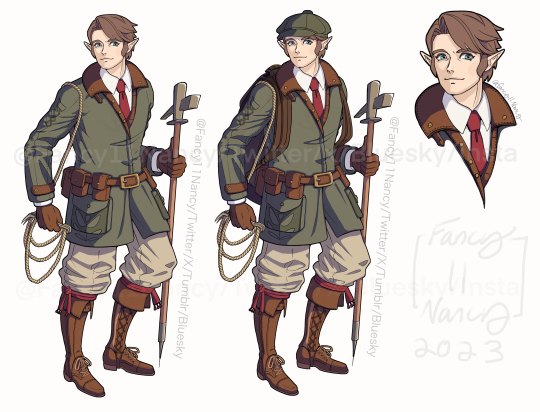
Finally, after all this time, 1920’s AU Link’s Main outfit concepts are all done!!! It’s been a challenge traveling for work and having time to work on art, but I am slowly getting better at it! (Sorry this took so long ;;)
AU Main Summary:
Since travel has been restored between the light realm and the twilight realm, a newfound unity flourished between the two societies. New friends, new towns/cities to explore, never-before-seen technologies and fashions at their disposal- all seemed well...until nefarious rumors of a returning great threat started to spread... Brief Lore of Link’s Role In The AU: With the new alluring land of Twilight open for entry and for any and all visitors, Link jumps at the chance to visit the amber-hued and shadow-filled world as Zelda’s accompanying guard for the latest council meeting. What and who lies in wait for Link to meet in this parallel reality? A world far more alien and advanced than his own? Rumors of an ethereal beauty shrouded in shadow? ___________________________________________________________ Link, a kindhearted, brave and daring country boy, is ready to make a name for himself as Hyrule’s greatest explorer! He’s known across the land as the “one-man army” for being extremely adaptable and prepared for any situation at any time with his wide arsenal of tools at his disposal. Some may also call him the “evergreen mountaineer” being as there is no mountain or peak he cannot scale- and by the fact he is always seen donning his famous dark green field coat, cap and his pickax of legend. He always greets friends and acquaintances alike with a warm smile and a firm handshake with a hearty hello (or ‘howdy’) with a slight southern draw. (A trademark from those who hail from “across the field," the Ordon Region.)
With his natural talent for exploring and his insatiable hunger for discovery and adventure, he’s charted vast ancient ruins, several dungeons of lore, and has uncovered a fantastic array of numerous treasures on both land and sea. Because of this, he’s occasionally seen as a young, irresponsible and reckless lad, especially due to the extreme nature of most of his exploration missions and his tendency to throw safety to the wind. He may seem like a “lone wolf” most of the time, but he always manages to bring along his dear friend Princess Zelda (and sometimes Midna) for any excursion he may be heading on…but in secret, of course. If the King of Hyrule were to ever find out about the “dangerous” adventures he’s been dragging Zelda onto, surely it would not go well…. Besides adventuring, Link spends his time helping his adoptive family back in Ordon with their expansive pumpkin farm and raising goats that are for producing the finest of goat cheese known region-wide. Any other spare time he has is at the right-hand side of Zelda, helping her with daily royal errands, solving mysteries, or just going out on the town to a local pub or to a delightful picnic in Hyrule Field. When he is at the pub, he can be seen boisterously playing an array of instruments, ranging from drums, stringed instruments, and most notably, his Ocarina (a very cherished gift from Zelda). While Link may be a bit of a country boy, he is no less capable of assisting Zelda in her pursuits of solving the various mysteries popping up around Castle Town, often providing a unique perspective from being the most skilled survivalist around. Once Midna arrives on the scene, she often enables Link’s craziest ideas- bringing out his secret (or not-so-secret) mischievous side. However, Link absolutely loathes Zant, Midna's towering Valet, due to his arrogant nature and his occasional mocking of Link’s short stature.
#legend of zelda#twilight princess#zelda au#the legend of zelda#illustration#twilight princess link#1920’s x zelda#the chateau of the red moon zelda au#link legend of zelda#link loz#the legend of zelda twilight princess#the chateau of the red moon
174 notes
·
View notes
Text
Gaza’s Turkish-Palestinian Friendship Hospital ‘severely damaged’ in Israeli strike
Oct 30th, 17:05 GMT
The Ministry of Health in Gaza has said that the Turkish-Palestinian Friendship Hospital has suffered severe damage in a fresh Israeli air attack.
The bombing hit the third floor of the hospital, with photos showing the impact of the strike.
(Link to tweet showing photos)
Israeli attack on cancer hospital is ‘first direct hit on medical facility’: Director
Oct 30th, 18:21 GMT
Ayman Nobani, reporting from Nablus, Occupied West Bank
The attack on a Turkish-funded cancer treatment hospital in Tal al-Hawwa, a district in Gaza City’s southwest, is the “first direct hit on a medical facility,” its director has said.
“The third floor, which is for administering anesthesia, was directly hit by Israeli shelling, which destroyed walls, windows, oxygen tank lines, water pipes and electricity lines, said Sobhi Skeik, director of the Turkish-Palestinian Friendship Hospital.
There were no patients or medical team on that floor during that time.
“The hit took place at 5:30pm local time but since yesterday, the environs of the hospital have been getting repeatedly struck by Israeli shelling,” he said.
In Gaza, there are 10,000 cancer patients. The hospital only has 156 beds, in addition to 100 beds for daily use, Skeik explained.
“We are worried that the hospital will be struck again and that our patients will get killed in their beds, and we are worried about the well-being of our staff, but we will continue to do our work. This is our duty.”
WHO unable to resupply Shifa and al-Quds hospitals, says official
Oct 30th, 19:25 GMT
The World Health Organization (WHO) says it has not been able to resupply two hospitals in northern Gaza, Shifa and al-Quds, because the UN deemed the level of risk unacceptable.
“It’s a disaster on top of a disaster. Health needs are soaring and our ability to meet those needs is rapidly declining,” said Rick Brennan, WHO’s regional emergencies director, adding a ceasefire was needed to enable a larger humanitarian operation.
A third of Gaza’s hospitals and 71 percent of clinics are nonfunctioning, he said.
WHO is continuing to resupply hospitals and clinics in southern Gaza, but relief delivered so far overall in the Strip is a “drop in the ocean”, Brennan added.
‘Nowhere safe’ for Palestinian patients to go amid Israel’s hospital evacuation push: UN official
Oct 30th, 20:10 GMT
Lisa Doughten of the Office for the UN Coordination of Humanitarian Affairs (OCHA) says “life hangs by a thread” for premature Palestinian newborns and patients relying on dialysis in hospitals in the Gaza Strip that are facing a lack of fuel.
“Some 9,000 cancer patients are not receiving adequate care,” she told the UN Security Council, expressing concern over the Israeli military’s warnings to evacuate healthcare facilities in the besieged enclave.
“There is nowhere safe for these patients to go, and for those on life support and babies on incubators, moving will certainly be a death sentence.”
#palestine#free palestine#al jazeera#i don’t know how i still have it in me to be shocked anymore#but im just stunned#nobody is doing fucking ANYTHING
268 notes
·
View notes
Text
[ 📹 Scenes from the violent firebelts rocking the Shaboura Refugee Camp, in the city of Rafah, in the southern Gaza Strip, following bombing by the Israeli occupation forces on Friday morning. ]
🇮🇱⚔️🇵🇸 🚀🏘️💥🚑 🚨
DAY 231 OF ISRAELI OCCUPATION GENOCIDE IN GAZA: U.S. TO BE INVOLVED IN GAZA SECURITY PLANS AFTER WAR, BORDER CROSSINGS REMAIN CLOSED, HUMANITARIAN AID DELIVERIES SLOW TO A DRIP, TORTURE WIDESPREAD IN ISRAELI PRISONS
On 231st day of the Israeli occupation's ongoing special genocide operation in the Gaza Strip, the Israeli occupation forces (IOF) committed a total of 9 new massacres of Palestinian families, resulting in the deaths of no less than 91 Palestinian civilians, mostly women and children, while another 112 others were wounded over the previous 24-hours.
It should be noted that as a result of the constant Israeli bombardment of Gaza's healthcare system, infrastructure, residential and commercial buildings, local paramedic and civil defense crews are unable to recover countless hundreds, even thousands of victims who remain trapped under the rubble, or who's bodies remain strewn across the streets of Gaza.
This leaves the official death toll vastly undercounted, as Gaza's healthcare officials are unable to accurately tally those killed and maimed in this genocide, which must be kept in mind when considering the scale of the mass murder.
The Biden administration intends to appoint a "civilian advisor" to oversee a "mostly Palestinian" peacekeeping force after the Israeli occupation's genocidal war in Gaza comes to an end, suggesting the administration intends to be deeply involved in Gaza's affairs long after the end of the war. That's according to four American officials speaking with Politico, an American online newspaper, under the condition of anonymity.
According to Politico, an American civilian advisor based in the Egyptian Sinai or Jordan would "advise" the commanding officer of an interim peacekeeping force composed of Palestinians, but also forces from local Arab countries such as Egypt, Morrocco and the United Arab Emirates, which would work to "maintain security and avoid an insurgency that could plunge the enclave into more turmoil."
The coded language of the Politico piece seems to suggest the United States would use the proxy of a potential peacekeeping force to suppress the Palestinian resistance in order to bolster the defenses of the Israeli occupation.
The US would help protect the Israeli entity's internal security within the borders of occupied Palestine, while the Israeli occupation could refocus on potential external threats such as Hezbollah in Lebanon, Kataeb Hezbollah in Iraq, and the Islamic Revolutionary Guard Corps (IRGC) in Iran.
At the same time, the United States would work with regional players to create a "Palestinian Council", made up of "Palestinians from Gaza," to "serve as an interim governing structure."
Politico says fierce debates are raging within the Biden administration, and with America's regional partners, about the makeup of such a peacekeeping force and what authorities it might be given, as well as intense debates over the governing structure of Gaza and what level of US involvement there would be following a potential end to the war.
“We have talked about a number of different formulas for some kind of interim security forces in Gaza,” a senior administration official told Politico, “and we have talked to a lot of partners about how the United States could support that with all of our capabilities from outside Gaza.”
Any potential force comprised of Palestinians would also face intense push-back from the Israeli occupation authorities, particularly Netanyahu's far-right regime, which opposes any kind of scenario that gives recognition to a Palestinian State.
In other news, the United Nations Special Rapporteur on torture, Alice Jill Edwards, said she has received information about the torture and ill-treatment of Palestinians detained in prisons overseen by the Israeli Prisons Authority and also in Israeli occupation army camps, according to reporting published in the Palestinian media.
According to local reporting, Edwards, who has been conducting a ""thorough review over the past two months," discusses information she received describing cases of Palestinian prisoners who "were beaten and detained while blindfolded and handcuffed for long periods in cells, in addition to being deprived of sleep and threatened with physical and sexual violence."
Edwards said the information she received also included details suggesting that Palestinian detainees were subjected to "degrading treatment," including photos taken of them in "offensive positions."
Edwards, an independent human rights expert previously appointed by the United Nations Human Rights Council, said she raised her concerns for the mistreatment of Palestinian detainees with the Israeli authorities, asking them to investigate and to give herself, along with "international human rights monitors and humanitarian observers" access to Palestinian prisoners.
Edwards said It was "very important that there be independent inspections," and urged the occupation authorities to "investigate all complaints and reports of torture or ill-treatment promptly, fairly, effectively and transparently."
She also added that officials from all levels of the Israeli occupation's prison system "must be held accountable."
Meanwhile, the Israeli occupation continued its mass murder campaign across the entirety of the Gaza Strip, slaughtering dozens of Palestinians, including large numbers of women and children.
At the same time, the Israeli occupation forces (IOF) continued its closure of the Rafah and Karm Abu Salem border crossings for the 18th consecutive day, further preventing thousands of humanitarian and medical aid trucks, along with fuel deliveries, from entering the Gaza Strip, while also preventing hundreds, if not thousands, of severely sick and wounded Palestinians from leaving Gaza for medical treatment abroad.
At the same time, the Israeli occupation continues to deliberately put Gaza's hospitals out of service, launching violent raids of hospitals and medical centers, while also cutting off their supply of fuel for electricity generators.
According to local medical sources, Al-Aqsa Martyrs Hospital in Deir al-Balah, in the central Gaza Strip, one of the largest hospitals in the Strip, has lost power due to running out of fuel, portending a healthcare catastrophe for the Palestinian population of central Gaza.
Similarly, the Kuwait Specialized Hospital in Rafah City is also facing a potential shutdown due to continued attacks by the Israeli occupation army, along with a shortage of fuel for generators.
Occupation forces are also advancing towards Kamal Adwan Hospital in Beit Lahiya, in northern Gaza, while all the remaining hospitals still functioning in Gaza are operating well beyond their capacities.
Gaza's healthcare system is also being overwhelmed by the dead and wounded in the Israeli occupation's ongoing bombardment.
In just a few examples, occupation warplanes bombed a residential apartment last night belonging to the Al-Ayoubi family, in the Shabiyah neighborhood of Gaza City, resulting in the deaths of at least 10 civilians, including women and children, while a number of others were wounded in the strike.
In another war crime, Zionist fighter jets bombed a warehouse for the distribution of humanitarian aid in Deir al-Balah, in central Gaza, leading to the deaths of no less than 12 civilians, mostly women and children, while dozens of others were wounded.
Another series of occupation airstrikes targeted house in the Al-Fakhoura neighborhood, west of the Jabalia Camp, in the northern Gaza Strip, murdering another 5 Palestinians and wounding several others.
The slaughter continued when Zionist air forces bombarded a residential home belonging to the Al-Masry family, in the Sheikh Radwan neighborhood of Gaza City, killing two citizens.
IOF artillery detatchments also shelled several neighborhoods of Gaza City, including the Al-Zaytoun, Tal al-Hawa, Al-Rimal, Al-Janoubi, Al-Sabra, Sheikh Ajlin, and Juhr al-Dik neighborhoods, while occupation soldiers and armored vehicles continue advancing towards Kamal Adwan Hospital in Beit Lahiya where they surrounded some medical staff and patients.
In another criminal assault, IOF warplanes bombed another residential apartment belonging to the Abu Al-Laban family on Al-Nafaq Street, north of Gaza City, resulting in a number of casualties.
Zionist soldiers and armored vehicles also fired machine guns in the vicinity of the Ali bin Abi Talib Mosque and Street 8 in Gaza City, while occupation gunboats fired missiles towards the coast of the city.
Two more civilians were killed in yet more occupation airstrikes along the coast of the town of Al-Zawaida, in the central Gaza Strip.
South of Gaza, Israeli occupation quadcopters fly near the European Gaza Hospital, while at the same time, Israeli Merkava tanks advanced from neighborhoods east of Rafah towards the central areas of the city, and along the outskirts of the Shaboura Camp, coinciding with the firing of IOF missiles, shells and hails of gunfire.
In Deir al-Balah, in central Gaza, at least four Palestinians were killed after an Israeli quadcopter drone dropped a bomb on a group of civilians, while occupation aircraft bombarded Al-Rashid Street, adjacent to Al-Nuseirat, with no casualties were reported in the strike.
Occupation bombing and shelling also targeted the Juhr al-Dik area north of the Bureij Camp.
Israeli warplanes also participated in the assassination of Major General Diyaa Al-Sharafa, the Assistant Commander of the National Security Forces in the Gaza Strip, with four other officers wounded in the strike as Al-Sharafa conducted an inspection tour near the Saraya junction in central Gaza.
Meanwhile, for the 13th consecutive day, the Israeli occupation army continued its incursion into Jabalia, in the north of Gaza, coinciding with intense volleys of missile and bomb strikes.
Communications with staff at Al-Awda Hospital in Jabalia continued to be cut off as medical personnel and patients were forced to evacuate after IOF soldiers stormed the hospital.
In Gaza's southernmost city of Rafah, large explosions continue to be heard in neighborhoods east of the city, along with downtown Rafah and south of the city.
At least one civilian was killed, and others wounded, following an Israeli bombing in the vicinity of the Kiir Junction in central Rafah, while occupation artillery shelling and gunfire from drones and helicopters continue intermittently in central Rafah and east of the city.
As a result of the Israeli occupation's ongoing special genocide operation in the Gaza Strip, the death toll has risen once again, now exceeding 35'800 Palestinians killed, including over 15'000 children and upwards of 10'000 women, while another 80'200 others have been wounded since the start of the current round of Zionist aggression, beginning with the events of October 7th, 2023.
May 24th, 2024.
#source1
#source2
#source3
#source4
#source5
#source6
#source7
#source8
#videosource
@WorkerSolidarityNews
#gaza#gaza conflict#gaza news#gaza war#war in gaza#genocide in gaza#gaza genocide#israeli genocide#genocide#israeli war crimes#war crimes#crimes against humanity#israeli occupation#occupation#palestine#palestine news#palestinians#free palestine#israel palestine conflict#war#end the occupation#politics#news#geopolitics#world news#global news#international news#breaking news#israel#current events
66 notes
·
View notes
Text
In 1920, Syria Palestina was a Roman-named colony or region, not a country, (aka Palestine), stretching from Iraq to southern Syria, and of course, there was no country called Jordan. The word Palestine was 100% derived from the Hebrew name for the Philistines. There is no evidence of a written language left by the philistines and the only name that they were known by was the name given to them by the Hebrews at the time. The evolution of the word went something like this:
פלש—פלישתים—ארץ פלשת—סוריה פלסטינה/פלשתינה—פלסטין/פלשתין
PaLaSh—plishtim—the land of paleset—Syria Palestina (the name given to the land of Israel and Judea as a punishment by the Roman)—- Palestine
PaLaSh is the Hebrew root word for invade meaning we called the sea fairing invaders by their actual name, invaders
Important to know that the Arabs absolutely DENIED ANY RELEVANCE and would not ascribe and meaning re: "Palestine" for themselves.
Arab nationalists in the post-WWI period ADAMANTLY rejected the designation. Arab spokesmen continued to insist that the land was, like Lebanon, merely a fragment of Syria. On the grounds that it dismembered an ideal unitary Arab state, they fought before the Anglo-American Committee of Inquiry and at the United Nations. The Arab historian Philip K. Hitti informed the Anglo-American Committee of Inquiry that “there is no such thing as Palestine in history.”
In 1937, Awni Bey Abdul-Hadi, founder of the first Palestinian Arab political party, testified to the Peel Commission, "There is no such country as Palestine. 'Palestine' is a term the Zionists invented. There is no Palestine in the Bible. Palestine is alien to us."
In May 1956, Ahmed Shukairy, who became the first head of the Palestine Liberation Organization (at a time when Jordan had annexed the "West Bank" and Egypt controlled Gaza), declared to the United Nations Security Council, “It is common knowledge that Palestine is nothing but southern Syria.”
In February 1970, Prince El Hassan bin Tala of Jordan, stated to the Jordanian National Assembly that "Palestine is Jordan and Jordan is Palestine; there is one people and one land, with one history and one and the same fate." Seven months later, the PLO attempted to take over Jordan, lost, and were unceremoniously, kicked out.
In 1977, PLO Executive Committee member Zahir Muhsein stated, "The Palestinian people do not exist. The creation of a Palestinian state is only a means for our continuing struggle against the state of Israel for our Arab unity. … In reality there is no difference between Jordanians, Palestinians, Syrians, and Lebanese."
One might argue that this particular group of Arabs established, sometime in the mid 1960s, a political identity as "Palestinians," when Arafat returned from strategic partnership meetings with the Soviets communists who were attempting to gain a larger foothold in the region, and advised him how to use "Palestine" identity as a cudgel against Israel.
What they are NOT is "ancient" inhabitants of the region which, under Ottoman rule, was also dubbed "Syria-Palestine." What they are NOT is any sort of distinct ETHNIC group—like the Judeans (Judea/Samaria/Israel), the Phoenicians (Lebanon), the Kurds, the Druze, or the Circassians. They are Arabs, sharing the language, culture, religion, cuisine, ethnic group, etc. of the people of Syria, Lebanon, Jordan, Egypt, and Saudi Arabia. Prior to the 1960s, before the PLO was created, there were ZERO Arabs self-identifying as Palestinians. During the 19 years that Jordan controlled the so-called "West Bank" (Judea and Samaria, which had been cleansed of Jews by the Jordanians) and when Egypt controlled Gaza, there was no movement to create a "Palestinian" state.
Attached is a photo of the Palestine Symphony Orchestra in 1936, which consisted of 73 jewish musicians, and conducted by none other than Arturo Toscanini (born in Parma, father was a tailor). Toscanini was the music director at La Scala, before spending spent 7 years conducting the New York Metropolitan Opera (1908-1915) and the New York Philharmonic (1926-1936). He lived out his latter years in NYC, about a 1/2 mile from where I lived for a decade from 2005-2015 in Riverdale (Bronx), which is now called Wave Hill, a non-profit cultural institution and botanical garden, located on 26 acres adjacent to the Hudson River.
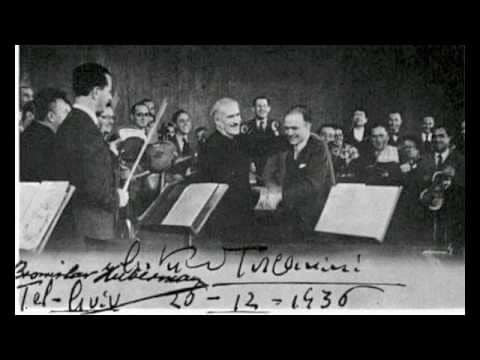
#syria palaestina#peel commission#judaism#israeli#israel#secular-jew#jewish#jerusalem#diaspora#secular jew#secularjew#islam#12 tribes of israel#samaria#judea#judean#rome#hadrian#philistines#kurds#phoenician#riverdale#bronx#toscanini#israel philharmonic symphony#palestine symphony orchestra#symphony#orchestra#syria#roman occupation
52 notes
·
View notes
Note
I'm curious, do you think Jon or Bran will be king at the end? I find Jonsas tend to be more receptive to the idea of King Bran, even if they don't think its endgame since Jon and Sansa can still be together in Winterfell, unlike the Jonerys side of the fandom who accept Queen Dany as the only possible satisfying endgame. I'm kinda torn between the two, I think grrm could make either work, though Bran would be the more subversive option than the secret prince of an overthrown ancient dynasty. But on the other hand I feel like there won't even be an Iron Throne/7 united kingdoms by the end, so for a King in the North, my #1 pick would always be Jon (alongside his Stark Queen of course).
Oh, I am 100% on board with king Bran! <3
My specific scenario is that he will be an unlikely selection voted in by a Great Council for the new political system in the South of Westeros, which is a parliamentary monarchy of a voluntary union of the Southern regions. There's a permanent Great Council, presided over by a much less powerful figurehead king (hereditary or not) at Harrenhal, which is centrally located in the South and big enough to house that kind of institution, plus symbolically close to the Isle of Faces.
(The Iron Throne and KL being roasted and destroyed, there's need for a whole reassassment of the political future of the continent.)
Bran would be chosen based on his maternal ancestry line (Tully-Whent) connecting him to Harrenhal, through an effective but stealthy election campaign by his aquaintence Samwell Tarly, and probably influenced by Tyrion Lannister in some way. His disability and extreme youth would be considered a plus in this scenario, ensuring the inability to increase royal power beyond the bare minimum through charismatic war mongering for the foreseeable decades. Bran would shine through his intelligence and his ability successfully negotiate political decisions as this proto-democratic institution finds its feet.
I don't think GRRM would ever contemplate putting a Targaryen descendent into a position of ultimate power over Westeros in the end. It would validate the entire dynasty in a way that entirely undercuts the point made by the descent into villainy for literlly everyone actively pursuing that same throne. It would also define Jon's place in the world through the Targaryen line instead of the Stark line, which is.... improbable, given his lack of personal ties to the South and his deep thematic and emotional connection to the culture, landscape, people and politics of the North. The perfect match to Queen in the North Sansa.
49 notes
·
View notes
Text
by Morton A. Klein
Moreover, Hamas terror attacks on Israelis increase Palestinian support for Hamas. For example, Palestinian support for Hamas increased dramatically after Hamas launched 4,500 rockets at Israel in May 2021.
Second, Gazan civilians actively participated in, aided, abetted, and celebrated the Oct. 7 massacre.
“Ordinary” Gazan civilian workers in Israel (thousands of whom were allowed into Israel due to the Biden administration’s pressure) collected detailed intelligence on every home and citizen in southern Israeli towns and drew maps for Hamas to easily locate Jewish nurseries and families to murder and kidnap.
Then, after the first wave of Hamas terrorists slaughtered more than 1,400 Jews, huge waves of “ordinary” Gazan civilians, armed with knives and screaming “Allahu Akbar,” flooded into southern Israel, and joined in the Hamas massacres and kidnappings. Mobs of Gazan civilians killed and gang-raped innocent Jews, chopped off innocent Jews’ heads, took hostages, entered and burned down massacred Jews’ homes, and ransacked and looted everything in sight — televisions, automobiles, jewelry, children’s bicycles, etc.
Israeli Telegram Channel South First Responders reported: “The assault on Southern Israel was not carried out exclusively by Hamas. It began with the entry of hundreds of heavily armed terrorists and was followed by waves of Gazans who looted the communities.” The mayor of the regional council encompassing most of the Gaza border explained: “The second wave of Arabs who came into the country were just as cruel as the terrorists of the first wave.”
Throngs of Gazan civilians then cheered the ghoulish site of Hamas parading bloodied, captured, and dead Jews’ bodies through the streets. Gazans beat the Jews as they passed by.
Overjoyed Palestinian Arabs in Judea/Samaria (the “West Bank”) also cheered the massacre, dancing in the streets. Unfortunately, this is nothing new. Palestinian Arabs routinely joyously celebrate when Arab terrorists murder Jewish children.
123 notes
·
View notes
Text
The United States, France and some of their allies call for an immediate 21-day ceasefire between Israel and Hezbollah while also expressing support for a ceasefire in Gaza, according to a joint statement of the countries released by the White House following an emergency UN Security Council meeting on Lebanon. “The situation between Lebanon and Israel since October 8th, 2023, is intolerable and presents an unacceptable risk of a broader regional escalation,” says the statement, citing the date Hezbollah began launching attacks on northern Israeli communities and military posts following its ally Hamas’s October 7 massacres in southern Israel. “This is in nobody’s interest, neither of the people of Israel nor of the people of Lebanon,” continues the statement. “It is time to conclude a diplomatic settlement that enables civilians on both sides of the border to return to their homes in safety.” The statement goes on to say that diplomacy “cannot succeed amid an escalation of this conflict,” before urging “an immediate 21 day ceasefire across the Lebanon-Israel border to provide space for diplomacy towards the conclusion of a diplomatic settlement.” “We call on all parties, including the governments of Israel and Lebanon, to endorse the temporary ceasefire immediately… and to give a real chance to a diplomatic settlement.” “We are then prepared to fully support all diplomatic efforts to conclude an agreement between Lebanon and Israel within this period, building on efforts over the last months, that ends this crisis altogether,” concludes the statement. The statement’s other signatories are Australia, Canada, the European Union, Germany, Italy, Japan, Saudi Arabia, the United Arab Emirates and Qatar.
The White House also releases a separate statement from Biden and French President Emmanuel Macron, who met on the sidelines of the UN General Assembly, urging “broad endorsement” of the joint statement and “for the immediate support of the governments of Israel and Lebanon.” “It is time for a settlement on the Israel-Lebanon border that ensures safety and security to enable civilians to return to their homes. The exchange of fire since October 7th, and in particular over the past two weeks, threatens a much broader conflict, and harm to civilians,” the two presidents say. “We therefore have worked together in recent days on a joint call for a temporary ceasefire to give diplomacy a chance to succeed and avoid further escalations across the border.” Neither of the statements mention Hezbollah or Hamas at any point.
They are so f***ing terrified Israel might destroy Hezbollah and Hamas. Where has the concern by these governments been over the past 11 months while Hezbollah has rained 10,000 missiles on Israel causing the displacement of 60,000 Israelis? The hypocrisy, cowardice, hatred for the world's only Jewish state, and genuine support for evil is mind boggling.
23 notes
·
View notes
Text
In southern Africa, leopards have long been harvested for their beautiful spotted furs. These coveted furs are often used in ceremonial regalia by cultural and religious groups in the area, making it difficult to address the dwindling wild cat population in the area.
Bridging the gap between animal conservation and cultural heritage, Panthera — a global wild cat conservation organization — has partnered with area communities and world-class designers to instead distribute synthetic furs for ceremonial garb.
This approach is ground-breaking and shows potential to be replicated in other areas of the world. In fact, new data shows that these initiatives have tripled the leopard population in the region.

Pictured: Two wild leopards are spotted in southern Africa. Photo courtesy of Panthera.
It started in 2013 when Panthera began its Furs For Life program when it was discovered that members of the Shembe Church were using as many as 15,000 leopard furs during religious gatherings.
Working with the Shembe community, Panthera created high-quality (and affordable!) synthetic leopard fur capes — amambatha — known as Heritage Furs. Since then, more than 18,500 capes have been distributed.
In 2019, Panthera extended these efforts with the Saving Spots initiative. The program was created in conjunction with the Barotse Royal Establishment of the Lozi people with the mission to preserve rich cultural traditions and declining wild cat populations.
Every year, hundreds of Lozi community members wear lipatelo, elaborate full-length skirts made of leopard and other animal furs, as well as mishukwe, lion-mane trimmed berets, as they gather for the Kuomboka Festival...
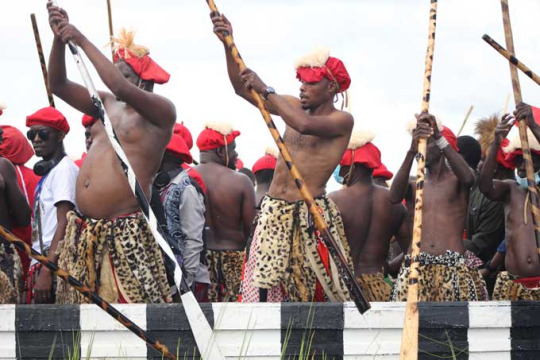
Pictured: Paddlers on the Nalikwanda Royal Barge wearing Heritage Furs.
Since implementing the Saving Spots program, the Barotse Royal Establishment has switched to over 1,350 synthetic fur lipatelo and 600 synthetic fur mishukwe. At a recent Lozi gathering, nearly 70% of participants wore garments of synthetic furs.
The idea was to maintain the sacred relationship the Lozi people have with these animals. By using a high-accuracy design, these synthetic furs have become trusted regalia to pass through future generations — all without causing harm to the animals they revere.
“It is important to conserve nature. If you don’t take care of nature, then you are headed for doom,” Lubinda Nyaywa, the chairperson of the Mwandi Council District said. “It’s a learning process for our young generations, teaching them that they must preserve, one, their culture, and, two, their natural resources.”
With the support of both the Lozi and Shembe leaders, affordable synthetic furs are gaining increased acceptance and popularity as alternatives to authentic furs. Some groups have even banned the use of authentic wild cat skins at future gatherings.
This, in turn, majorly contributes to the protection and stabilization of wild cat populations in the region.
As mentioned, new data suggests that Saving Spots has helped triple leopard densities in the southern region of Kafue National Park.
-via Good Good Good, May 4, 2023
#leopard#leopards#conservation#endangered species#environmentalism#regalia#traditional clothing#sustainability#ethically sourced#lozi#shembe#zambia#africa#good news#hope#sustainable clothes#fur#fake fur#faux fur#heritage#tradition
189 notes
·
View notes
Text
🟧 AFTER YOM KIPPUR - Updates from Israel
THANKS - special thanks to our valiant soldiers who spent their Yom Kippur keeping us safe instead of with their families or in synagogue. Our prayers are in their merit.
⭕SUICIDE DRONES from HEZBOLLAH hit HERTZILYA on Yom Kippur night, hitting a NURSING HOME. 1 intercepted, 1 got through. 1 injury.
⭕HEAVY ROCKET BARRAGES across the north, hitting Haifa, Acco, Karmiel, Safed, Rosh Pina, and towns throughout the north over Yom Kippur. 3 people were slightly injured by a rocket falling in the Western Galilee and 12 were slightly injured on the way to a protected area.
⭕ROCKETS FROM GAZA on Yom Kippur, to southern Ashkelon. No casualties, and the IDF continues a policy of forced evac of source areas of fire.
▪️YOM KIPPUR - medics treated 286 fainted, dehydrated or felt ill due to the fast, and took 146 women in labor to the hospitals, one who gave birth in the ambulance.
▪️A HERO SOLDIER HAS FALLEN.. in battle in Gaza before Yom Kippur.. Ittai Fogel, 22, from Yakir. May his family be comforted among the mourners of Zion and Jerusalem, and may G-d avenge his blood!
❗️On Yom Kippur the IDF had 1 serious injury in battle in Gaza, no others casualties.
♦️IDF airstrikes on 280 targets throughout the holiday, in Lebanon and Gaza.
♦️IDF forces eliminated 50 terrorists in face-to-face encounters and directed air force strikes, and destroyed more than 200 Hezbollah terrorist targets from the air and with artillery.
♦️IDF created a small border buffer into SYRIA, in the Alonei Habashan - Kwdana area.
🔹The Christian sectors in Lebanon are in talks to form a political alliance against the Hezbollah.
🔹Yemeni defense minister says an operation against the Houthi Rebels is "imminent”.
🔹Jordan’s Foreign Minister Ayman Safadi calls for Chapter VII of the UN Charter to be invoked to “force Israel to comply with international law and immediately end all its illegal wars” in Gaza, the occupied West Bank and Lebanon. This framework allows the UN Security Council to impose sanctions or in extreme cases even military force to guard against threats to peace.
▪️Nicaragua announced the severance of relations with Israel "due to the attacks on the Palestinian lands".
▪️Speaker of the Iranian parliament arrived in Beirut and toured the area, leaving later in the day to Turkey. This is the 2nd Iranian commercial-diplomatic flight to break the Israeli air ban.
Part 2

⚠️ CHANGES IN DEFENSIVE GUIDELINES, MILITARY ZONES DECLARED IN NORTHERN ISRAEL
⚠️ Following a situational assessment, starting today at 20:00, changes will be made to the Home Front Command’s defensive guidelines. In southern and northern Golan, except for certain communities in the Emek HaYarden Regional Council, the activity scale will move from Limited Activity to Partial Activity, allowing educational activities subject to Northern Command's guidelines. In Daliyat al-Karmel and Isfiya in the Carmel area, the activity scale will shift from Partial Activity to Full Activity, with restrictions on gatherings of over 2,000 people. The rest of the country's guidelines remain unchanged. It is crucial to follow official Home Front Command channels and check updates on the National Emergency Portal and Home Front Command app.
🟥 As of 20:00 today, Zar'it, Shomera, Shtula, Netu'a, and Even Menachem in northern Israel will be declared a closed military zone. Entry to this area will be prohibited for security reasons.
🔷 For the first time in the Middle East war, the US intends to deploy its THAAD (Terminal High Altitude Area Defense) anti-ballistic air defense system in Israel to prepare for a potential Iranian attack. This system is designed to intercept and destroy ballistic missiles, providing a high level of protection.
◾The US has also announced new sanctions on Iran's oil sector in response to Tehran’s missile attack on Israel.
#Israel#October 7#HamasMassacre#Israel/HamasWar#IDF#Gaza#Palestinians#Realtime Israel#Hezbollah#Lebanon
40 notes
·
View notes
Photo

Glanum
Glanum, located near St-Rémy-de-Provence in southern France, was a Greek and then Roman town which prospered due to its location on trading routes between Italy and the Rhodanus (Rhone River). The town benefitted from a large building project in the Hellenistic period and another spree during the reign of Augustus which furnished Glanum with temples, a theatre, basilica, monumental arch, and Roman baths, amongst other amenities. The town was abandoned in the 3rd century CE but today offers the modern visitor an impressive array of Greco-Roman ruins.
Historical Overview
Glanum was first settled by the Celts, specifically the Salyans (Salluvii), from the 7th to 6th century BCE. Indeed, the town's name derives from Glan, a Celtic spring deity who continued to be worshipped at the site into the Roman period. The town grew following an influx of colonists from Massalia (Marseilles) in the 2nd century BCE. Flourishing as a trade centre and noted as a place of healing, Glanum began to mint its own silver coinage (with a bull and a Glanic mother goddess design) and benefitted from a Hellenistic building programme which included a peristyle building, ornamental spring, temple, bouleuterion (public assembly theatre), and several large private villas. The town spread to cover some 20 ha in this period and was protected by a circuit wall.
The Romans took an interest in the town from the 1st century BCE following the Second Salyan War (90 BCE) when the consul Caecilius quashed what would be the last Celtic revolt in the region. The town was razed, but during the reign of Augustus, Glanum once more benefitted from a programme of rebuilding. New monumental structures included an agora, forum, theatre, a curia (council building), basilica and various other public buildings, temples, Roman baths, a triumphal arch, and mausoleum. Outside the town, two aqueducts were built to regulate Glanum's water supply. In addition to new buildings, the town was granted certain Latin privileges, made a full Roman colony in the 1st century CE, and continued to prosper as a trading stop near the Via Domitia.
Glanum's glory days came to an end when it was destroyed by the Alemanni c. 260 CE. The site was then abandoned by the local people in favour of a new location at nearby St-Rémy-de-Provence. Glanum was first excavated in the early 20th century CE and work continues today with some of the temples undergoing restoration.
Continue reading...
40 notes
·
View notes
Note
More of Viserys and Stark!reader.😁😁

The Right Path
pairing: Fanon!Viserys Targaryen x Female OC
summary: More of Viserys and Stark!reader, Elna trying to interact with Rhaenyra
Word count: 2,4K
Warnings: Fluff, Angst
Masterlist 1
Masterlist 2
Elna was more than happy, she was overjoyed. The King had chosen her for a bride and announced that during a small council meeting, she was not in attendance but her father was there. He came running to her to inform her of the King's decision. Her father was happy for her but he only showed her his sorrow of having to be separated, even little Cregan threw a tantrum.
Elna however needed to breathe a little, she needed to get her thoughts straight. She liked the king, he was nice to her and she was happy she would not end up with a dying man however this was all too much for her, she was going to be Queen, that was a huge responsibility. So Elna decided to take a walk in the gardens after she successfully put Cregan down for his nap.
She enjoyed the sight that greeted her, a sight she was going to see for a very long time, the gardens looked like they were alive with so many flowers and trees, something she did not see back at home. She no longer needed to pick flowers from the southern regions when visiting because she was going to have it all here.
Elna had walked for a short time when she caught sight of a weirwood tree. She knew they had one here but she did not know the location, but now she knew where to go to pray. She was a couple of steps away still hidden behind a bush when she saw princess Rhaenyra and Alicent Hightower sat under the tree. The princess was pulling on the grass looking angry while the Hightower girl looked relieved.
"I cannot believe he wants to marry so soon after mother's death. Has he no respect?" Rhaenyra threw some of the grass in her hands somewhere by her feet. Elna's heart dropped at the words, she did not think the princess would be so angry with the marriage, she had been so caught up with her own family and the king to think of the princess.
"Princess, your father has the right to remarry" Alicent tried calming down the dragon princess.
"To a northerner savage, out of everyone" The princess pushed herself up from the floor and started pacing. The Hightower girl remained seated but started twiddling with her thumbs.
"I am sure Lady Stark is not so bad, I have heard many great things about her" Alicent defended Elna. She was just glad she had not been chosen.
"Yes and she will give my father sons and then I will be thrown away when I am no longer heir" The princess hissed. Elna now understood that the princess was not only enraged and sad over her father's decision but also afraid.
Elna decided that hiding was no longer an option, she had too much to say. She faked a cough putting on a smile and moved out from behind the bush. She acted shocked seeing the two girls only a couple of years her junior.
"Forgive me princess, I did not know you were here" Elna curtsied trying to keep her smile gentle. She did not want to anger the princess even more.
"What are you doing here?" Rhaenyra asked with anger lacing her words. She crossed her arms in front of her protectively.
"I heard there was a weirdwood tree and wished to pray" Elna answered. She stepped closer to the duo. Alicent had pushed herself to her feet by then and stepped closer the princess. Rhaenyra eyed her weirdly, she had no escort, not even a handmaiden.
"I am gladdened to have found you here, I intended on visiting you princess" Elna continued before the princess could speak. Rhaenyra's eyebrows shot up in confusion and shock.
"Visit me? What for?" The princess asked suspiciously. Elna found her palms growing wet with sweat, she was nervous with the way the princes was seizing her up and down like some criminal.
"I am sure you have heard of the King's decision-" Elna started. She took a deep breath to summon every single piece of bravery she had in her body and stepped closer to the princess.
"- I wanted to tell you that I do not intend to take your mother's place neither in your life nor the king's or int he kingdom-" Elna reached over to grab the princess' hand in hers gently, not wanting to startle her or make her think she was here to attack her.
"- if you wish I will not even show you my face if that makes you feel at ease but I assure you princess that if I and the king were to be blessed with children you would still be a priority to us both and the heir will remain to be you" Elna finished. Alicent took a step back giving the two women their moment. But the shock on her face was still evident.
"You could never take my mother's place, you are nothing compared to her, so do not attempt to win me over with your words, that will not work on me" The princess pulled her hands out of Elna's hands harshly and pushed past her to walk away. Elna stumbled a little back when Rhaenyra's shoulder collided with hers.
"Apologies Lady Stark, the princess is a little stressed" Alicent picked up the hem of her dress and followed after the princess. Elna rubbed her shoulder as her eyes darted back to the red tree. Her eyes welled up with tears, feeling humiliated at being rejected but pushed them back.
She stepped closer to the tree kneeling down by one of the roots. Her hands glided over the rough surface remembering her mother. Her mother always told her to have patience, Elna believed that she had patience, she raised her brother from the moment he was born and her mother died. But the princess seemed nowhere near close to warming up to her.
Elna wished her mother was here to advice her on what to do and how to act. If she were to tell her father he would simply tell her to endure it and Elna knew that was not the right way to face the situation, yes the princess needed time but at the same time Elna needed to do something to win the princess' favour. She did not come to the capital to make enemies.
"Lady Stark" Elna jumped at the new male voice. She turned around to find the King standing where she had stood earlier with his hands behind his back.
"Your grace" She stood back up to her feet and curtsied. The King stepped closer to her loosing his smile at the sight of her tears.
"Why are you crying, Lady Stark?" He placed his forefinger under her chin and raised her head up so she would look at him. Elna knitted her eyebrows in confusion and raised her hand to touch her cheek to find it wet and immediately wiped the tears away.
"I had not noticed" She admitted. She gulped trying to compose herself.
"Did the thought of marrying me repulse so?" The King joked. She shook her head with a small giggle.
"Of course not, I just - I wish my mother was here tis all, your grace" She heaved a sigh. The king placed a hand on her cheek trying to comfort her.
"I am sure she is happy for her wherever she may be" The king's words made Elna's heart flutter. She smiled, just a tiny smile, but it was enough for the king.
"Your words comfort me, my king" She placed a hand on top of his over her cheek. The King clicked his tongue disappointed.
"Call me Viserys" He grinned when her cheeks darkened and she dropped her gaze down. His eyes trailed over to the tree when a thought struck him.
"Do you wish to marry here? In the ways of your people?" He asked. He grabbed her hand and pulled her closer to the tree.
"What about the maesters and the seven and the people?" She asked feeling dumb when she realised that she knew nothing of this religion, her father did not spare this religion a second thought and refused to teach her and Cregan about it. She knew only from what she had heard from other people.
"I am the King" He reminded her. her mouth opened in an O shape and nodded her head. Viserys chuckled tightening his grip on her hand when something caught his eye, the history book of Aegon the conquerer.
"Do tell me Lady Stark, was there a different reason for your tears?" The King asked. He let go of her hand to grab the book delicately to not damage the old pages.
"No, why, my king- Viserys" She paused when he turned to glare at her and immediately changed the way she addressed him.
"I wonder-" He held up the book to show her. She tilted her head to the side confused.
"It was my daughter, was it not?" He asked. His eyebrows twitched into a frown of his own.
"The princess? no she welcomed me warmly" Elna tried to cover up. She did not come here to make enemies meaning she will not be the reason that a father and daughter fight each other. She could not bare it.
"Do not lie to me" The King demanded. Elna swallowed the lump in her throat and looked down at her feet. She could not lie to the King either, he was the king and her future husband.
"I will talk to her" He intended for his words to assure her but she only looked at him with horror.
"NO, I mean please do not mention this, she just needs time" Elna tried to stop him when he attempted to bypass her. The King was more than confused but nodded nonetheless.
"How about you show me the rose bush again?" She wrapped her arms around one of his and pulled him away from the weirwood tree. Viserys was not dumb, he knew she was changing the subject but did not mention it now curious how she was going to act to win his daughter over.

It was the same day the King announced that a feast will be held to celebrate the betrothal between him and Elna. Her father insisted she wore a grey dress one last time before she would join house Targaryen and wear red and black for the rest of her days. She could not say no and wore her favourite grey dress that was off shoulder and had bell sleeves. She also made Cregan wear the same of grey matching with her.
When they arrived at the feast she was sat beside the king with her father on her other side and an empty seat beside the king for the princess. Cregan was sent to play with the other children of the nobles with his wet nurse to look after him.
"My King, the princess seems to be running late" The Hand of the King pointed out also noticing the lack of his own daughter's presence.
"She's going to be the end of me" Viserys replied. He had hoped she would come and not make a fuss of it but now he could see that she had not intention of showing her face at the feast also sparking he rumour of her not accepting the betrothal.
"If I may my king-" You spoke earning the attention of both men. The Hand glared at you heatedly as you moved your body closer to the king.
"-I can go and see if the princess is alright" You suggested. You gave a nod to Viserys wanting him to accept. The King was hesitant but accepted either way. You pushed your chair back and made your way out of the hall accepting congratulations with a sweet smile and grace in your movement.
You had to ask some guards for the way to the princess' room but finally found your way. You knocked on her door before stepping in. She was sat on her bed with a dress by her side. Alicent was sat beside her in a beautiful green dress and she looked ready for a feast while the princess looked like she was ready to go to bed.
"What are you doing here?" The princess asked, angrily standing on her feet to glare at you.
"Lady Hightower, if you do not mind, I wish to speak to the princess" You nodded at the door. Alicent was hesitant but moved closer to you. You moved to the side giving her space to pass before closing the door behind her.
"What do you want?" The princess asked harshly. You had to push back a wince at her tone but you lost the sweet smile on your face.
"Listen Princess, I know you view me as a horrible person, a monster here to steal your father and throne but I am not a monster and I will not steal either one" You moved closer to her. Your tone was stronger and your patience was wearing thin, even if it had been only a day.
"You are the princess and the heir and my father bent the knee to you in extension the north meaning I am loyal to you. A Stark has never broken and oath and I will be damned if I were to be the first" You leaned closer to her, and her eyes followed your every move, your fingers wrapped around the dress on the bed.
"You will wear this beautiful gown and you will come with me to the feast, your father is worried sick about you" You held out the dress to her. She took it from you but still watched you every move.
"I am not your enemy Princess, I wish only for us to become friends. I wish not for a rivalry to grow between you and my future children" The princess sighed sadly. She nodded her head accepting the words of Elna. She may have not warmed up to her but she was on the right path.
Rhaenyra changed her clothes before the women made their way back the feast. The king's face lit up at the sight of his daughter walking into the ballroom with Elna by her side. Rhaenyra was still stiff in her walk and when she sat down but at least she had a tiny smile on her face, and that was good enough for now.
#visery x oc#viserys targaryen#viserys x reader#hotd viserys#king viserys#rhaenyra x oc#rhaenyra imagine#rhaenyra fanfiction#rhaenyra fanfic#rhaenyra targaryen#house of the dragon imagine#house targaryen#house of the dragon#hotd#hotd imagine#game of thrones#requests#request
374 notes
·
View notes